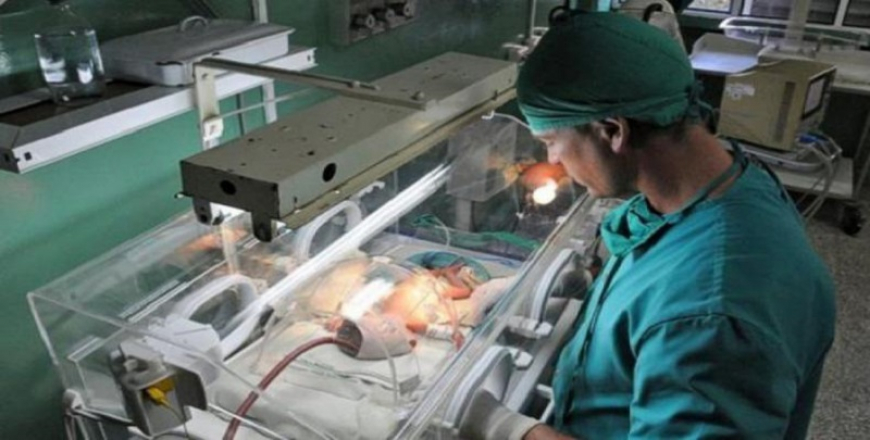Every year, low birth weight is one of the indicators that most impacts the infant mortality rate in the province of Holguin. Hence the particular interest of the public health sector in reducing this rate and in monitoring pregnant women. Ensuring their pregnancy reaches term and thus preventing serious complications for the mother and child.
At the end of 2024, of the 6,968 births that occurred in the province, 590 were low birth weight, representing 8.47 percent.
Regarding how Holguin is working to reduce the risk factors that most contribute to low birth weight. Dr. Alberto Rubén Piriz Assa, head of the Maternal and Child Care Program (Pami) at the General Directorate of Health (DGS), comments, “To ensure that infant mortality remains stable over time. We must work on the low birth weight index. Because if this index is above eight, the mortality rate we will see in 2024 of 5.31 can be considered lucky. So this low birth weight index does not guarantee that the rate will be lower or close to five.”
According to the specialist, low birth weight has three fundamental components: a child born underweight before 37 weeks. A child born with growth restriction, and a child born with growth retention and who was born prematurely.
There are elements that the population needs to be aware of: there are four risk factors that can be improved or even eliminated. And we will address these risk factors through promotion and prevention.
The first is the extremes of life (those under 20 and those over 35). When pregnancies in Cuba must necessarily be planned and desired, and this is not happening.
Pregnancies in Cuba are desired but not planned, even though there is a family planning clinic. They are not used when their most essential function is to correct all modifiable risk factors and control non-modifiable ones. In addition to providing genetic counseling services.
Equally worrying is that of the nearly 600 low-birth-weight babies born last year. 465 (78.8 percent) had intrauterine growth restriction. With only the municipalities of Gibara and Urbano Noris meeting the proposed targets.
Regarding modifiable factors and those that cannot but can be controlled. The pediatric intensivist also points out that “this risk factor of extreme age is present in 22.6 percent of children born with low birth weight. If we add to this figure the six percent of children born to mothers over 35 years of age, the figure almost reaches 30 percent. This factor is modifiable, that is, it can be eliminated.”
“Another factor is pregnancy detection in women with toxic habits. Whether they are alcoholics or smokers, or those with other toxic habits, which is completely modifiable.
There are other risk factors that cannot be eradicated, and we control those. Such as when a pregnant woman has poor weight gain. High blood pressure during pregnancy, a history of preeclampsia, and anemia in the third trimester,” he concluded.
In addition, women of childbearing age who have anemia undergo pregnancy detection are seen; this is modifiable. Anemia can be treated before conceiving to achieve pregnancy with adequate hemoglobin.
Another factor is malnutrition due to under- or over-nutrition, and this can also be corrected. This is a very complex issue, and the ideal is to individualize the problem and each case so that the healthcare system, in intersectoral coordination, can provide help.
While underweight is prevalent in all Holguin municipalities, Calixto Garcia, Cacocum, Antilla, and Frank Pais have indicators above nine. Hence the need to design differentiated strategies aimed at monitoring pregnant and infant women. Ranging from Primary Health Care (PHC) to Secondary Care in provincial hospitals.
Furthermore, this indicator, which has become a health problem, is a goal that is being worked on tirelessly in light. Of the potential consequences for both the immediate health of newborns and their long-term development. To the extent that its causes are addressed. Maternal and child health outcomes can be improved.
Certainly, in the face of irreversible phenomena such as population aging. Increasing the birth rate is vital, but we must ensure that this increase goes hand in hand. With ensuring that women of childbearing age who become pregnant reach this stage in the best possible condition.
- Contributions from the Health Sector to Guarantee Water Quality - 26 de December de 2025
- Cuban Health System on Alert Regarding H3N2 Subclade K Influenza - 25 de December de 2025
- The Ophthalmology specialty in Holguin boasts its first Doctor of Clinical-Surgical Biomedical Sciences - 23 de December de 2025

